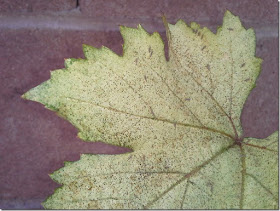A. First, keep in mind that some varieties of
pomegranates produce larger fruit than others. That and all red fruit color is
why the variety called Wonderful was selected for commercial production in the
United States. If you have a variety that can produce larger fruit it generally
has to do with 4 considerations; the health of the tree, no water stress as the
fruit is gaining in size, how it is pruned and the number of fruit on the tree.
 |
| Good size and the color is developing nicely on a not yet mature 'Wonderful' pomegranate. |
Larger fruit is produced
on flowers coming off of larger stems. This has to do with how it's pruned.
Pruning should maintain older and larger wood. Pomegranates grown as a shrub
with lots of stems coming from the ground will produce a lot of fruit but they
will tend to be smaller. Larger fruit will be produced if 5 main stems are
maintained coming from the ground rather than 50. Trees with 4 or 5 major stems
will produce fewer flowers but the fruit that these flowers produce will be
larger.
 |
| Producing a large percentage of large fruited pomegranate relies mostly on proper pruning and irrigation. |
Make sure pomegranates do
not get water stressed during the summer months as the fruit is beginning to
get larger. I have found that a 3 to 4 inch layer of woodchips on the soil
surrounding the tree help keep the soil from drying between irrigations.
Removing flowers or small
fruit can help increase size of the remaining fruit (thinning) only if there
are far too many flowers being produced. Proper pruning reduces the number of
flowers and thinning is seldom needed.
Fertilize the tree in
February or March just before new growth begins in the spring. Flowers are
produced on new spring growth.
































